|
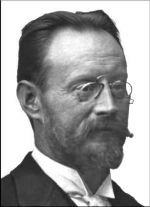 Dr. Carl Auer von Welsbach - (1858-1929) Dr. Carl Auer von Welsbach - (1858-1929)
This article features one of the most important inventors that lighter collectors must celebrate. Without Von Welsbach it is likely we would all be collecting either electric lighters or another collectible.
Dr Carl Auer von Welsbach of Austria invented the cerium flint in 1903. 2007 marked the 100th anniversary of flint production as Von Welsbach started Treibacher chemical works in 1907 to produce his invention.
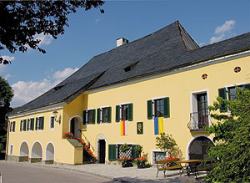 Much of the information in this article comes from the Auer von Welsbach museum in Althofen, Austria. I recommend a visit during your next trip to Europe. The Auer von Welsbach-Museum offers a unique display of exhibits of the first metal filament lamp, an impressive collection of the rarest lighters and the earliest gas mantle light. Much of the information in this article comes from the Auer von Welsbach museum in Althofen, Austria. I recommend a visit during your next trip to Europe. The Auer von Welsbach-Museum offers a unique display of exhibits of the first metal filament lamp, an impressive collection of the rarest lighters and the earliest gas mantle light.
Apart from the first color photographs in Austria, made by Carl Auer von Welsbach in 1908, the visitor also finds the laboratory which is furnished with the original equipment and tools used by this distinguished Austrian discoverer and inventor. Manuscripts of famous scientists and innumerable other rarities augment this fascinating exposition. The museum is full of early striker lighters and other unusual mechanisms. Von Welsbach did not hold any patents for lighters, instead owning the cerium flint patent which was needed for use with pyrophoric devices designed by other lighter manufacturers.
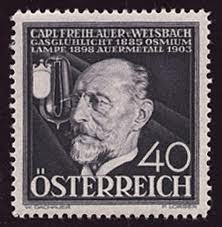 Von Welsbach is likely the first lighter collector as he bought early strikers from these manufacturers in the 1910s thru 1920s and displayed them in his Vienna showroom. Von Welsbach is likely the first lighter collector as he bought early strikers from these manufacturers in the 1910s thru 1920s and displayed them in his Vienna showroom.
Dr Carl Auer von Welsbach was an Austrian scientist and inventor who had a talent for making discoveries and turning them into commercially successful products. He is particularly well known for his work on the rare earth elements, which led to the development of the flint used in modern lighters, the gas mantle which brought light to the streets of Europe in the late 1800s, and the development of the metal filament light bulb.
Welsbach was born in Vienna , son of Therese and Alois von Welsbach , director of the Imperial printing office in the days of the Austro-Hungarian empire. Carl went to secondary school in Mariahilf and Josefstadt before graduating in 1877.
In 1878 he entered the University of Vienna studying math, general chemistry, engineering, physics, and thermodynamics. He then moved to the University of Heidelberg in 1880, where he continued his studies in chemistry under the direction of Robert Bunsen (inventor of the Bunsen burner).
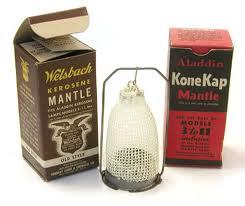 In 1885 he used a method he developed himself to separate didymium for the first time. Later that year he received a patent on his development of the gas mantle, which he called Auerlicht, using a chemical mixture of magnesium oxide - lanthium oxide and - yttrium oxide which he called Actinophor. Actinophor when heated with cotton burns away leaving a solid (although fragile) ash which glows brightly when heated. These original mantles gave off a green-tinted light and were not very successful. In 1885 he used a method he developed himself to separate didymium for the first time. Later that year he received a patent on his development of the gas mantle, which he called Auerlicht, using a chemical mixture of magnesium oxide - lanthium oxide and - yttrium oxide which he called Actinophor. Actinophor when heated with cotton burns away leaving a solid (although fragile) ash which glows brightly when heated. These original mantles gave off a green-tinted light and were not very successful.
In 1890 he introduced a new form of the mantle based on a mixture of thorium dioxide and cerium oxide which he developed in collaboration with his colleague Dr. Haittenger. These proved more robust and had a much "whiter" light. Another company was founded to produce the newer design was formed in 1891, and the device quickly spread throughout Europe.
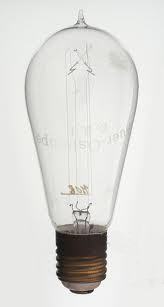 He then started work on development of metal-filament mantles, first with platinum wiring, and then osmium. Osmium is very difficult to work with, but he developed a new method which mixed osmium powder with rubber and sugar to a paste, which is then squeezed through a nozzle and fired. The paste burns away, leaving a fine wire of osmium. He then started work on development of metal-filament mantles, first with platinum wiring, and then osmium. Osmium is very difficult to work with, but he developed a new method which mixed osmium powder with rubber and sugar to a paste, which is then squeezed through a nozzle and fired. The paste burns away, leaving a fine wire of osmium.
Although originally intended to be a new mantle, it was during this period that electricity was being introduced into the market, and he started experimenting with ways to use the filaments as a replacement for the electric arc light. He worked on this until finally developing a workable technique in 1898, and started a new factory to produce his Auer-Oslight, which he introduced commercially in 1902. The metal filament light bulb was a huge improvement on the existing carbon filament designs, lasting much longer, using about 1/2 the electricity for the same amount of light, and being much more robust.
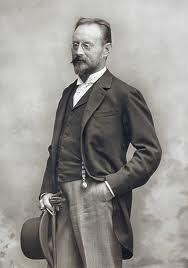 In 1903 he won another patent for what is today known as a flint. Welsbach's flints consisted of pyrophoric alloys - 70% cerium and 30% iron, which when scratched or struck would give off sparks. This system remains in wide use in cigarette lighters today. In 1907 he formed Treibacher Chemische Werke to build and market the devices. In 1903 he won another patent for what is today known as a flint. Welsbach's flints consisted of pyrophoric alloys - 70% cerium and 30% iron, which when scratched or struck would give off sparks. This system remains in wide use in cigarette lighters today. In 1907 he formed Treibacher Chemische Werke to build and market the devices.
Over the rest of his life he turned again to "pure" chemistry and published a number of papers on chemical separation and spectroscopy . He presented a major paper on his work on the separation of radioactive elements in 1922. In April 1929 - Carl Auer von Welsbach died at the age of 70.
|

